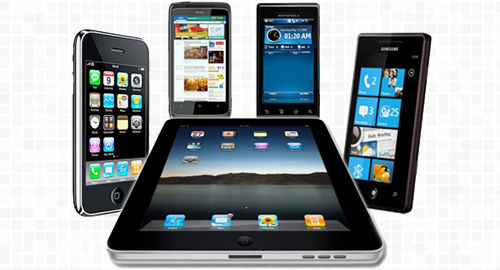In the last
blog post, we discussed current and future trends in online marketing. Some of
the more important ones mentioned were gamification, content marketing, social
marketing, loyalty programs going mobile, and SEO evolving and becoming yet
more organic.
Gamification
is easily the most intriguing (and entertaining) of these trends. The term has
a broad sense – it usually means turning a regular task into a game, but it can
also mean applying game-design thinking to anything. In any case, the goal is
to engage users and motivate them by presenting something in an unexpected way,
having them solve problems or react, or compete against each other, and then
rewarding them.
Gamification
works great with social media. Users are much more involved in a game if they
are playing with actual people who they know. And there is no need for the
creation of an entire social game, like Farmvile for instance. Users can compete against each other – or
collaborate - by completing tasks as simple as linking and commenting on
Facebook.
One such
task is checking-in at places with a mobile device, and Foursquare is an
excellent example of this. It has various rewards which motivate users to
complete different tasks: visit a place many times, bring friends that are also
using the app, etc.
Badges and points can also be given for liking, commenting, sharing, tweeting, pinning, etc. This drives users to market the brand socially for free. It also motivates them to visit the brand’s websites and accounts or to involve their friends in the competition.
Badges and points can also be given for liking, commenting, sharing, tweeting, pinning, etc. This drives users to market the brand socially for free. It also motivates them to visit the brand’s websites and accounts or to involve their friends in the competition.
Dropbox conducted a very successful campaign that merged gamification and referral marketing. Called the “Space Race,” it targeted university students. Each university as a whole was rewarded points – and, accordingly, cloud space – for students that signed up with their university email. Furthermore, individual students were awarded additional points for the referrals they have made. The progress was visualized by rockets launching into space.
Another
trend mentioned in the previous blog post was loyalty programs going mobile.
Loyalty programs also make a great combo with gamification. During the game,
users can collect points, which later give them access to discounts and
promotions at the brand’s stores. Of course
the “game” can be a very simple task. AirMiles, for instance, is a loyalty
program that works with a variety of partners and rewards. They ran a
competition for checking-in at their partners’ operations and shops. The top 50
users with the most points got their miles doubled.
But in general, loyalty programs going mobile are very trendy. Even Apple released such an app – Passbook, which saves virtual discount cards and vouchers. The successful and popular trend within mobile loyalty is checking-in. There are lots of apps who offer just that: rewarding check-ins by users with loyalty points, offers and discounts. Other apps require scanning a QR code or a receipt. Many use referral marketing and give points to users for friends that sign up or download the app.
Of course, mobile
also combines well with location-based marketing, and it’s always a plus if the
app shows the offers in the vicinity of the user. An interesting mobile concept,
mentioned in the previous post, is Goodiez, an app developed by the company
where I did my internship for a Norwegian phone operator. The app allowed to
user to purchase discounted products and offers by simply adding the charge to
their phone, without any kind of money transfer whatsoever.
The easiest
way to turn loyalty mobile, however, is to simply let the user scan his
physical vouchers and cards and turn them into digital versions. Golden Gekko,
where I did my internship, also developed an app for this purpose called
Nokadi. In all
these cases, the app is just a moderator; users download it to redeem the
offers, while business sign up for it as well in order to get their offers
included.
The future holds vast and interesting possibilities for this trend with the rise of new devices and new ways to be online. Wearable devices, for instance, hold great opportunities. Google Glass, for instance, could point out the user's favourite stores and places where he can redeem loyalty points, as he is simply walking around. Of course, this has to be done in an unintrusive and subtle way, bringing benefits to the user instead of pouring offers and invitations on them. And looking even further ahead, and considering the concept of the Internet of Things, we could imagine loyalty marketing moving into our houses. Concepts are already being developed for digitalization and connection of everyday objects such as a fridge or a microwave. Maybe in a few years, when a user runs out of a certain food he normally consumes, his fridge would suggest him supermarkets that offer discounts on that type of food.
The future holds vast and interesting possibilities for this trend with the rise of new devices and new ways to be online. Wearable devices, for instance, hold great opportunities. Google Glass, for instance, could point out the user's favourite stores and places where he can redeem loyalty points, as he is simply walking around. Of course, this has to be done in an unintrusive and subtle way, bringing benefits to the user instead of pouring offers and invitations on them. And looking even further ahead, and considering the concept of the Internet of Things, we could imagine loyalty marketing moving into our houses. Concepts are already being developed for digitalization and connection of everyday objects such as a fridge or a microwave. Maybe in a few years, when a user runs out of a certain food he normally consumes, his fridge would suggest him supermarkets that offer discounts on that type of food.
Content marketing is another strong trend in online marketing. It’s a win-win situation; instead of pouring reasons to buy the product upon users, companies give them free content of actual value. When users get engaged with the content, which is useful for them, they get interested in the company and visit its website to look for more such content. A popular content marketing practice among corporate companies is releasing white papers. Slideshare is a good platform for that. Videos are also a very successful and popular medium, since users are getting less interested into static text and images and more interested into video. Infographics are also a very successful practice recently. Webinars and podcasts are used as well.
In the coming years, we might as well see "old-fashioned" marketing boasting the qualities of a product die out completely and become replaced by a practice which offers value and content, beneficial for both sides. Content marketing will continue to grow smarter and will orient itself towards understandig the users' needs better, providing rich and valuable resources instead of being intrusive and aimed at selling at ll costs.
Social
networks are an inseparable part of our lives already, and thus social
marketing is a trend that has been present for a while but it’s still growing
and expanding. Good social marketing is organic and, just as content marketing,
does not shove reasons to buy the product into the user’s faces, but instead highlights
the fact that their friends are talking about and using the product. Presenting
the product through the user’s social connections builds trust and does not
seem like an ad. Posting regular engaging content, encouraging users to
check-in or like and share content, and rewarding them for that, are free and
easy ways to market a product online. For instance, I’ve been to a sushi restaurant
called Monster Sushi, which offers a free tea or coffee with the menu if you
check-in while you are eating there.
Finally,
regarding SEO, marketers should be alert and forget any sort of black-hat or
unorganic marketing. Google is developing new and better ways for
distinguishing such practices and punishing websites for this by lowering their
ranking. For instance, it is starting to recognize backlinks that have been
placed somewhere with no obvious reason, and this links harm the site’s
ranking. The best practice for optimizing a website from now on would be
keeping to white-hat marketing.
In general,
the most successful practices in online marketing right now are the ones that
do not actually advertise the product to the user, but make the user feel at
ease and give him value. Then, he gets naturally interested in the brand or
company, is engaged and has his own motivation to return to the website or
product.
Works Cited:
Content Marketing Experience. (n.d.). Retrieved May 25, 2013, from http://pinterest.com/contentxpert/.
Demistifying How Facebook's EdgeRank Algorithm Works. (April 23, 2013). Retrieved from http://blog.hubspot.com/understanding-facebook-edgerank-algorithm-infographic.
Reward Your Customers: 9 Loyalty Platforms for Booming Businesses. (n.d.) Retrieved May 26, 2013, from http://www.hongkiat.com/blog/mobile-loyalty-platforms/
The Power of Gamification in Loyalty. (n.d.) Retrieved May 27, 2013, from http://www.loyalty-ip.com/article-81-the-power-of-gamification-in-loyalty
Works Cited:
Content Marketing Experience. (n.d.). Retrieved May 25, 2013, from http://pinterest.com/contentxpert/.
Demistifying How Facebook's EdgeRank Algorithm Works. (April 23, 2013). Retrieved from http://blog.hubspot.com/understanding-facebook-edgerank-algorithm-infographic.
Reward Your Customers: 9 Loyalty Platforms for Booming Businesses. (n.d.) Retrieved May 26, 2013, from http://www.hongkiat.com/blog/mobile-loyalty-platforms/
The Power of Gamification in Loyalty. (n.d.) Retrieved May 27, 2013, from http://www.loyalty-ip.com/article-81-the-power-of-gamification-in-loyalty

















